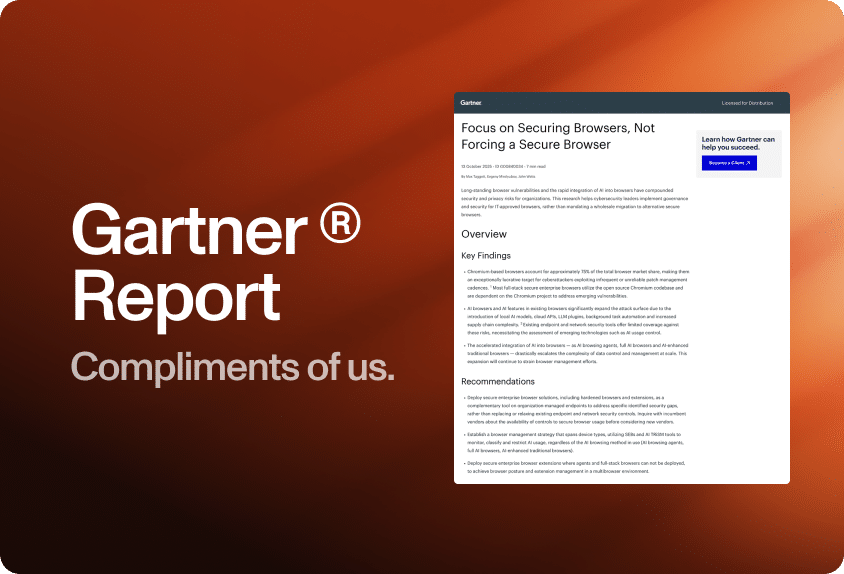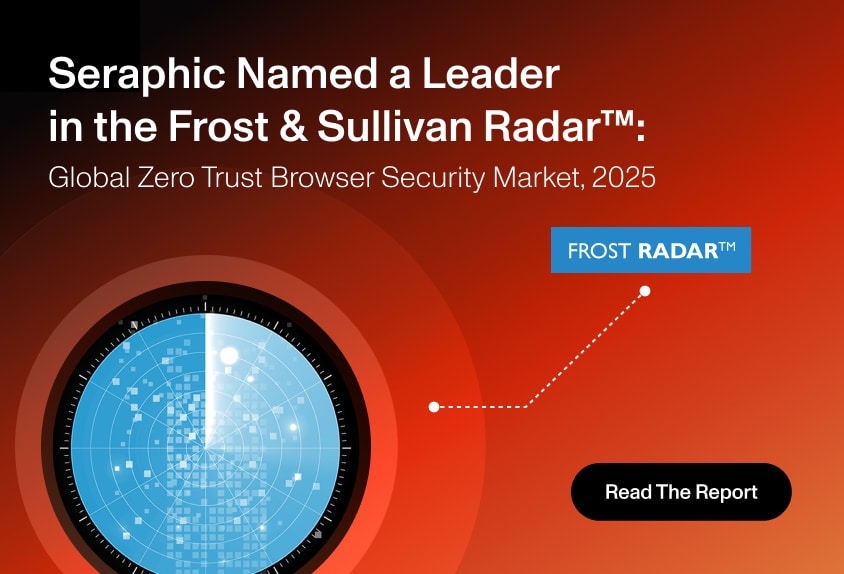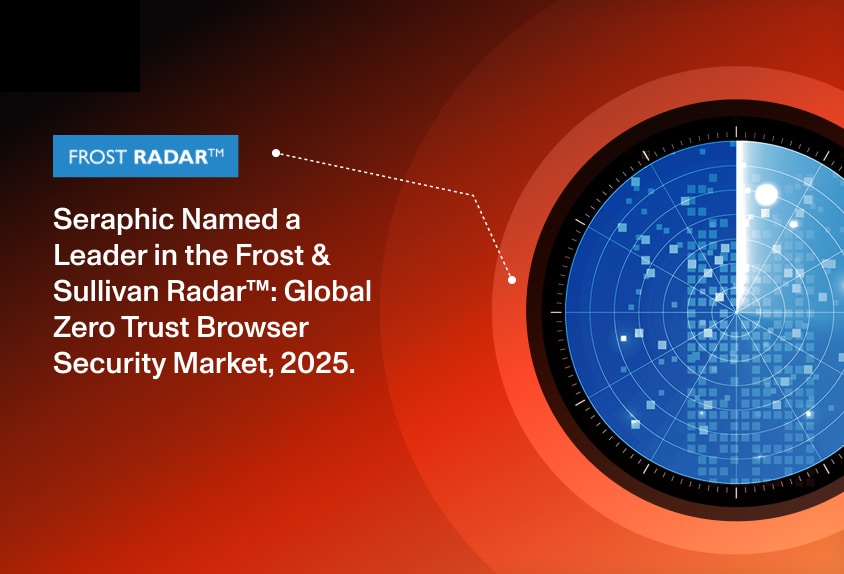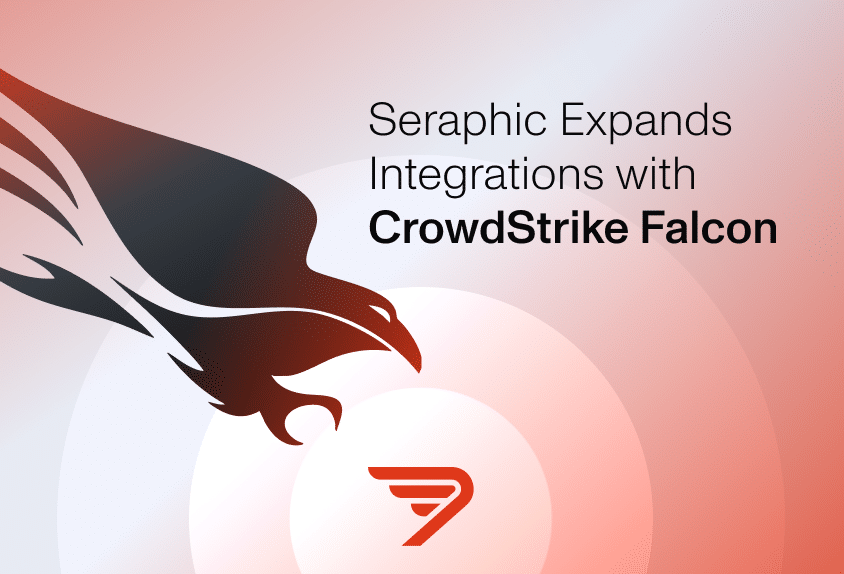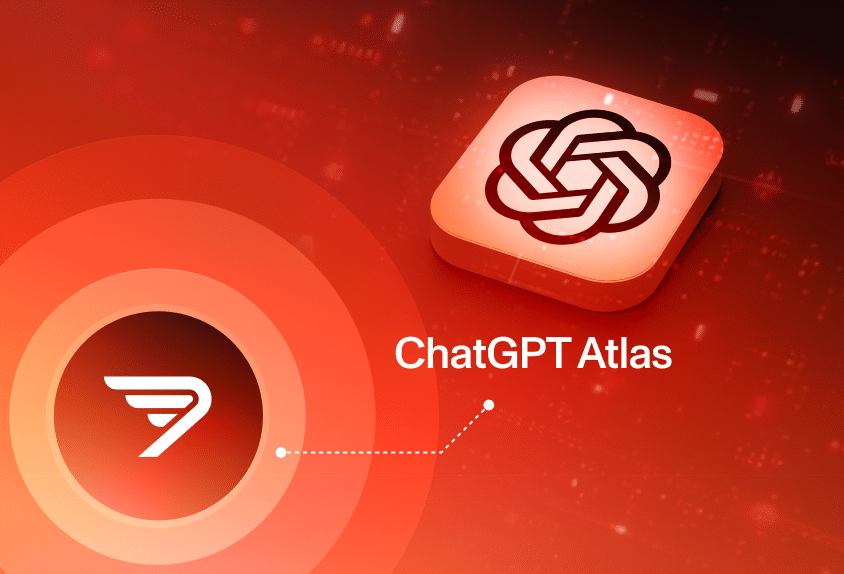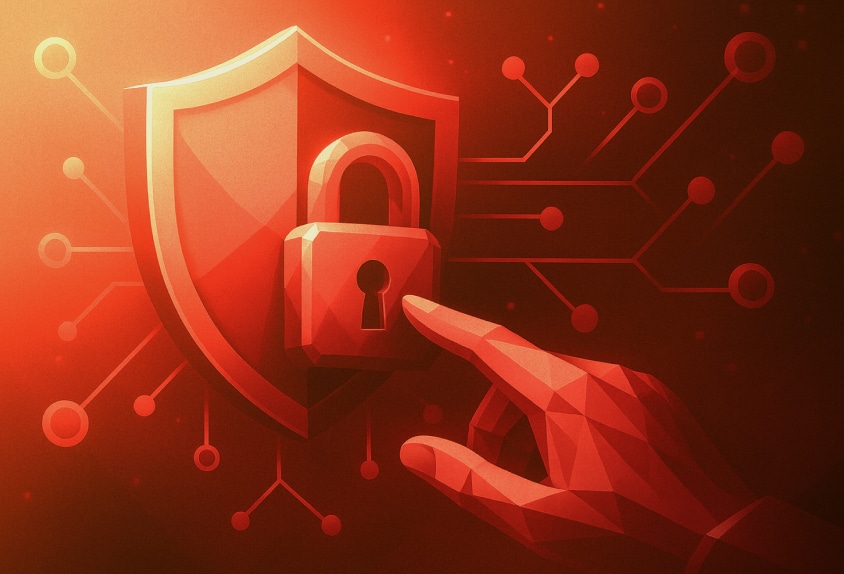What Is SASE?
SASE refers to Secure Access Service Edge, a cloud-delivered network architecture that converges networking and security functions. It is a network architecture that combines SD-WAN (Software-Defined Wide Area Network) capabilities with comprehensive security services like secure web gateways, cloud access security brokers, and zero-trust network access, all delivered from the cloud.
SASE aims to provide secure and optimized network access to users and applications regardless of their location, supporting modern, distributed workforces. SASE solutions typically include SD-WAN, secure web gateways, cloud access security brokers, firewall-as-a-service, and zero-trust network access.
Traditional network security architectures struggle to adapt to the shift towards cloud computing and remote work. SASE offers a more flexible and secure solution.
In this article:
- Why SASE Matters
- Key Components of SASE
- Comparing SASE with Other Technologies
- Practical Use Cases for SASE
- Best Practices for Successful SASE Deployment
Why SASE Matters
The traditional perimeter-based security model is no longer sufficient as users, devices, and data increasingly reside outside corporate networks. SASE addresses this challenge by providing consistent security services at the edge, closer to users and resources. It enables real-time inspection of all traffic—regardless of where users connect—helping organizations minimize risk as they embrace digital transformation and remote access strategies.
With SASE, organizations can reduce operational complexity by consolidating multiple security and networking solutions into a single, integrated platform. This simplifies management and policy enforcement.
Learn more in our detailed guide to SASE security
Key Components of SASE
To deliver integrated networking and security services, SASE brings together several core technologies into a unified, cloud-native architecture.
1. Software-Defined Wide Area Network (SD-WAN)
SD-WAN forms the networking backbone of SASE, enabling intelligent traffic routing across multiple transport links such as MPLS, broadband internet, and LTE. It dynamically selects the best path for each application based on performance metrics like latency, jitter, and packet loss. This ensures users experience optimized application performance and reliable connectivity regardless of their location.
In addition to performance benefits, SD-WAN provides application-aware routing and centralized management capabilities. Administrators can prioritize critical business applications, enforce bandwidth controls, and apply granular policies from a single console. This flexibility helps organizations reduce WAN costs while improving user experience across distributed sites.
2. Secure Web Gateway (SWG)
A secure web gateway (SWG) protects users from internet-based threats and enforces acceptable use policies by inspecting and filtering web traffic. It analyzes inbound and outbound traffic in real time to block malicious websites, prevent malware downloads, and enforce URL filtering rules.
SWGs also help organizations control access to specific web categories, enforce data loss prevention (DLP) policies, and ensure compliance with industry regulations. As part of a SASE framework, the SWG is delivered from the cloud, enabling consistent web security enforcement for users whether they are on-premises, at branch offices, or working remotely.
3. Cloud Access Security Broker (CASB)
A cloud access security broker (CASB) provides visibility and control over user interactions with SaaS applications and other cloud services. CASBs help organizations discover shadow IT, monitor usage patterns, and detect risky behaviors such as unauthorized data sharing or anomalous login activity.
Beyond visibility, CASBs enforce security policies like data encryption, access controls, and threat protection across sanctioned and unsanctioned cloud apps. Integration with identity and access management (IAM) systems and threat intelligence feeds allows CASBs to provide context-aware enforcement.
4. Firewall as a Service (FWaaS)
Firewall as a service (FWaaS) delivers enterprise-grade firewall capabilities through the cloud, eliminating the need for physical appliances at each location. FWaaS includes essential security features such as packet filtering, intrusion prevention systems (IPS), application control, and advanced threat protection.
Because it is cloud-delivered, FWaaS offers centralized policy management, making it easier to enforce consistent rules across all users and locations. This reduces operational overhead and improves scalability, enabling organizations to deploy firewall protections quickly as new sites or users come online.
5. Zero Trust Network Access (ZTNA)
Zero trust network access (ZTNA) provides secure, identity-based access to applications, enforcing the principle of least privilege. Unlike traditional VPNs, ZTNA does not grant network-level access. Instead, it establishes secure, brokered connections to specific applications based on user identity, device posture, and contextual factors.
ZTNA continuously verifies users and devices before and during each session, adapting access permissions based on real-time risk assessments. This reduces the attack surface, limits lateral movement, and ensures that users can only access the resources explicitly authorized by policy.
Related content: Read our guide to VPN replacement
Comparing SASE with Other Technologies
SASE vs. VPN
Virtual private networks (VPNs) provide encrypted tunnels for remote access but lack the granular security controls and scalability of SASE. VPNs are typically perimeter-based and can expose networks to lateral movement if credentials are compromised; they do not inspect user traffic or enforce application-level policies. SASE, on the other hand, uses identity-driven access and contextual security for users, applications, and devices.
Additionally, SASE offers cloud-delivered policy enforcement, faster deployment, and better performance optimization compared to traditional VPNs. As organizations shift to SaaS and distributed workforces, relying solely on VPNs leads to bottlenecks and security gaps that SASE’s integrated cloud-native architecture addresses more effectively.
SASE vs. SSE
SSE (security service edge) is a subset of SASE focused solely on security services delivered at the edge, including SWG, CASB, and ZTNA. Unlike SASE, SSE does not include networking functions like SD-WAN. While both aim to secure distributed environments, SSE is typically used when organizations already have networking solutions in place but want to consolidate and improve security.
The distinction matters when planning infrastructure. SASE provides an integrated approach to both networking and security, suitable for organizations seeking end-to-end convergence. SSE fits scenarios where security modernization is needed without disrupting existing network architectures.
SASE vs. ZTNA
Zero trust network access (ZTNA) provides secure, authenticated access to applications based on the principle of “never trust, always verify.” ZTNA assumes no implicit trust for any user or device, enforcing strict access control. While ZTNA is a core principle within SASE, a standalone ZTNA solution only addresses application access, not broader network or traffic security needs.
SASE builds on ZTNA by integrating it with other services like SWG, CASB, and SD-WAN. This combination enables organizations to enforce zero trust policies across all network layers, while also securing internet access and optimizing connectivity.
SASE vs. CASB
CASB (cloud access security broker) offers visibility and control over cloud applications, managing how data is accessed and shared in SaaS environments. While CASB is an important part of SASE, its scope is limited to cloud access governance. SASE integrates CASB alongside other key services like ZTNA, SWG, and FWaaS, providing coverage across all network traffic, users, and endpoints.
Using CASB alone does not address network-level threats or optimize traffic delivery. With SASE, organizations combine CASB’s capabilities with broader security and networking functions, ensuring consistent policy enforcement for all users and resources, regardless of their location or method of access.
SASE vs. SD-WAN
SD-WAN focuses on improving network connectivity and optimizing traffic routing between branch offices and cloud resources, but it has limited built-in security. SASE extends SD-WAN functionality by embedding security services into the connectivity stack. This convergence allows SASE to provide secure, optimized access without adding separate security appliances or solutions.
Implementing SASE over SD-WAN enables organizations to manage both security and networking through a single platform. This consolidation streamlines operations, reduces costs, and ensures security controls are enforced at every edge.
Practical Use Cases for SASE
Remote Workforce Access
SASE enables secure, efficient access to corporate applications and resources for remote workers. By leveraging identity-based authentication and continuous traffic inspection, SASE ensures that each access request meets security policies, regardless of user location. The cloud-native model also reduces latency.
As remote work becomes standard, organizations benefit from SASE’s ability to scale quickly and apply centrally managed policies to thousands of distributed workers. This helps maintain productivity and security hygiene and allows IT teams to manage access dynamically as users, devices, and demands change.
Securing SaaS Applications
SASE secures access to SaaS platforms like Microsoft 365, Salesforce, and Google Workspace. Integration of CASB and SWG functions provides visibility into application usage while enforcing data protection and compliance policies. Real-time traffic inspection blocks threats such as malware and phishing, protecting data across cloud environments.
Enterprises can confidently adopt more SaaS solutions, knowing that consistent security controls will be applied. SASE frameworks allow for granular policy enforcement, alerting, and automated responses to suspicious activity within SaaS environments.
Multi-Cloud Environments
With the increase in multi-cloud adoption, organizations need consistent security and connectivity across diverse platforms. SASE delivers unified policy management for traffic flowing between public cloud, private cloud, and on-premises resources. This simplifies compliance, supports end-to-end encryption, and prevents lateral movement by threat actors across environments.
The cloud-delivered nature of SASE means that its services scale with organizational needs and provide agility as workloads shift between clouds. This is particularly valuable for DevOps and modern application deployments, where workloads may frequently migrate but require the same stringent security controls.
Branch Connectivity
Traditional branch connectivity solutions often required individual security appliances at each site and manual configuration, leading to complexity and increased risk. SASE replaces these legacy models with cloud-delivered SD-WAN and security services that can be provisioned rapidly at any branch or remote site.
Centralized management enables IT teams to apply consistent policies, optimize traffic routing, and quickly respond to incidents across the entire network of branches. This improves operational efficiency and reduces costs while improving security, compliance, and connectivity for distributed organizations.
Best Practices for Successful SASE Deployment
1. Conduct a Readiness Assessment
Before deploying SASE, perform a thorough assessment of your existing network and security architecture. Identify gaps in connectivity, legacy tools, and policy inconsistencies. Understanding your cloud adoption posture, user distribution, and application usage patterns informs the SASE solution design and ensures a seamless migration.
Documentation and stakeholder interviews should be part of the assessment. Involving teams from network operations, security, compliance, and business units helps clarify requirements and align SASE deployment objectives. This groundwork prevents missteps, optimizes resource allocation, and sets clear metrics for measuring deployment success.
2. Pilot and Phased Rollout
Begin with a phased deployment, piloting SASE in a controlled environment or with a specific business unit. This approach allows you to validate integration workflows, policy enforcement, and user experience before scaling organization-wide. Testing in stages minimizes disruption and exposes unforeseen challenges early.
After a successful pilot, expand the rollout incrementally to additional users, devices, or branch locations. Continually gather feedback and monitor performance during each phase, using insights to refine policies and processes. This iterative deployment reduces risk and ensures the new infrastructure meets operational needs.
3. Leverage Centralized Policy Management
Effective SASE implementation hinges on centralized policy management, which ensures security and networking rules are consistently applied. With a unified policy engine, organizations can quickly adapt to changing threat landscapes and enforce compliance without manual intervention at individual sites.
Central management also facilitates rapid response to incidents and changes in the business environment. By having a single source of truth for policy, IT teams reduce the likelihood of configuration errors, speed up audits, and maintain tighter control over access and security practices across the organization.
4. Automate Monitoring and Incident Response
Automation is essential for managing the scale and complexity of SASE environments. Utilize integrated tools to monitor network traffic, detect anomalies, and respond to incidents in real time. Automated playbooks can quarantine threats, block malicious connections, and generate alerts with minimal manual intervention.
By leveraging automation, organizations improve response times and free up security teams to focus on higher-level initiatives. Continuous monitoring coupled with automated remediation minimizes the impact of attacks, reduces dwell time, and supports security resilience without increasing operational overhead.
5. Engage in Continuous Security Training
User awareness is a critical element of a successful SASE deployment. Continuous security training ensures that employees understand emerging threats, policies, and best practices. Education should cover secure access procedures, phishing awareness, and the implications of accessing sensitive data through cloud services.
Training programs need regular updates to reflect evolving attack vectors and new SASE functionalities. By making ongoing education a part of corporate culture, organizations strengthen their human firewall and reduce the likelihood that security incidents arise from user error or misunderstanding.
Replacing SASE with Seraphic Browser Security
While SASE offers a powerful framework for consolidating network and security functions, its complexity, cost, and reliance on traffic redirection often create friction for modern organizations—especially those with diverse endpoints and remote workforces. Seraphic offers a streamlined, cost-effective alternative by delivering many of SASE’s core security outcomes directly through the browser. By embedding Zero Trust principles natively into all major browsers (without the need for agents, proxies, or VPNs), Seraphic reduces architectural overhead while improving user experience and policy enforcement at the true edge: the browser.
Seraphic replaces traditional SASE components like SWG, CASB, and ZTNA with a unified browser security layer that delivers real-time threat prevention, granular control over web activity, and deep visibility into user behavior—all without rerouting traffic or compromising speed. Organizations gain immediate protection against phishing, zero-day exploits, data leakage, and shadow IT with far simpler deployment and maintenance. For security leaders looking to reduce complexity while maintaining a strong Zero Trust posture, Seraphic represents a modern, browser-first approach that renders legacy-heavy SASE stacks optional, not essential.
